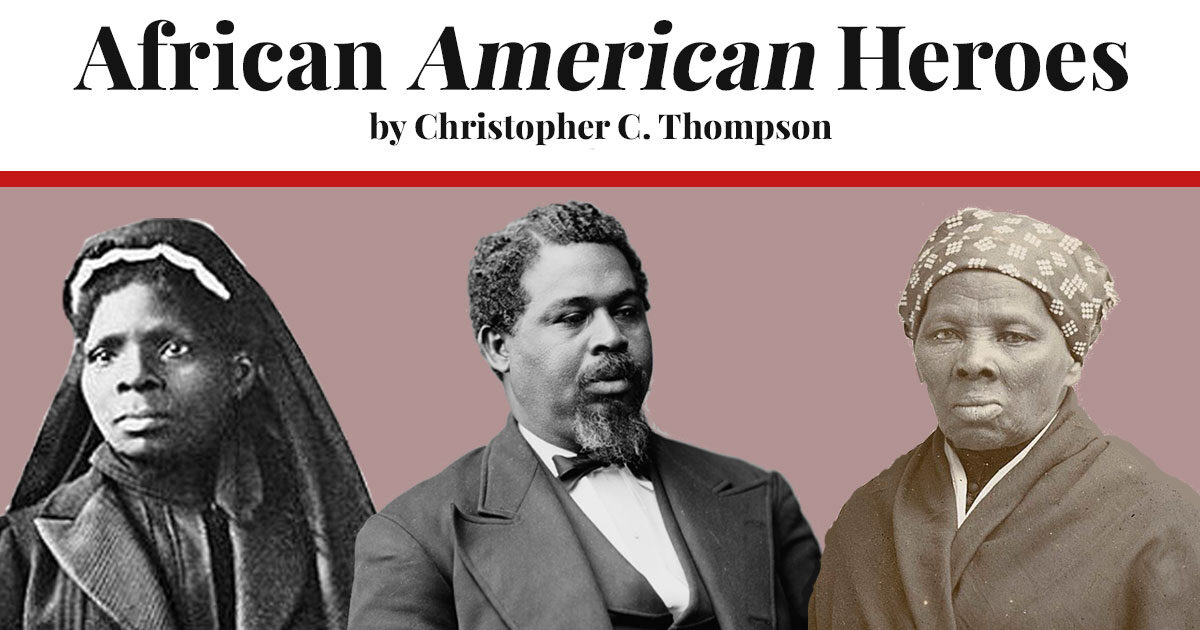African American Heroes
by Christopher C. Thompson | 7 February 2025
Here’s a trivia question for you. What do Susie King Taylor, Robert Smalls, and Harriet Tubman have in common? They all played crucial roles in Beaufort, South Carolina, contributing to the Union war effort and advancing freedom, education, and civil rights for African Americans.
Now for the record, I was born and raised in Beaufort. It’s something that I have always been proud of, for several reasons. However, as I have gotten older, I have become even more proud as I have learned more and more about the history of our region.
Beaufort and the surrounding area are affectionately known as the Lowcountry. This is because it’s the “lower” (southern) portion of the state, but mainly because it’s situated much closer to sea level than the other parts of the state—thus susceptible to flooding. Beaufort and the Lowcountry are often referred to as the birthplace of Reconstruction, and each of these three figures played a significant role. So if you thought about their connections to efforts for the Union army, in Beaufort, you would be absolutely correct. Nevertheless, each of these individuals deserves tremendous honor for their individual achievements.
Susie King Taylor, born enslaved in Georgia, defied laws against Black literacy by secretly learning to read and write. During the Civil War, she escaped to Union-occupied South Carolina, where she became the first Black Army nurse, serving with the 1st South Carolina Volunteers, an all-Black regiment. In addition to her nursing duties, she taught literacy to formerly enslaved soldiers, believing education was a powerful tool for empowerment. After the war, she continued this mission, establishing schools for freed people in South Carolina. Her memoir, Reminiscences of My Life in Camp, remains a rare firsthand account of the war from a Black woman’s perspective. Through her efforts, Taylor helped pioneer Black women’s roles in wartime nursing and education.
Robert Smalls, another key figure, was born enslaved in Beaufort, South Carolina. In 1862, he carried out a daring escape by stealing the CSS Planter, a Confederate ship, and sailing it past enemy lines to deliver it to the Union Navy. This act secured freedom for himself and his crew, and he later became a Union naval captain, recruiting Black soldiers for the war. After the war, Smalls transitioned into politics, becoming a U.S. Congressman during Reconstruction. He played a significant role in establishing South Carolina’s first public school system, and is likely the first lawmaker in American history to argue publicly for compulsory education. General Smalls was a champion of the needs of the people who fought for civil rights, public education, and land ownership for freed people. His leadership demonstrated the capacity of African Americans in both military and political spheres, making him a lasting symbol of Black resistance and empowerment.
Harriet Tubman, already renowned for leading enslaved people to freedom via the Underground Railroad, took on a crucial role in Lowcountry South Carolina during the Civil War. She served as a Union spy, scout, and nurse, using her knowledge of Southern terrain to aid military efforts. Her most famous contribution in the Beaufort area was leading the Combahee River Raid in 1863, which freed over 700 enslaved people and struck a significant blow to the Confederacy. After the war, Tubman continued advocating for Black rights, women’s suffrage, and pensions for Black veterans. She lived in Beaufort for some time after the war helping formerly enslaved people establish businesses and systems for economic sustainability. As the first woman to lead a U.S. military raid, she became, and remains, an enduring symbol of courage, direct action, and liberation.
Together, Taylor, Smalls, and Tubman played instrumental roles in shaping South Carolina’s Reconstruction era. Their efforts laid the groundwork for Black political power, education, land ownership, and civil rights, even as these gains faced resistance during Jim Crow. Their legacies continue to inspire modern activism, proving that their fight for justice and equality remains relevant today.
So in the opening line, I asked if you know what these three figures have in common. If you mentioned their race, their work with the Union Army, their activism, or their residence in Beaufort, SC, all of that would be correct. However, the one thing that I believe supersedes all of those things is that they are all iconic American heroes. We often think of African American leaders as marginal to the American story, but that’s simply not the case. These and countless other leaders helped to craft and shape the American story. Their efforts and impact is not marginal. They are not simply Black icons. They’re American icons. They are true American heroes, and their greatness is part of the amazing American tapestry that makes this nation great.
 Christopher C. Thompson is a pastor in Beaufort, South Carolina.
Christopher C. Thompson is a pastor in Beaufort, South Carolina.
To comment, click/tap here.




